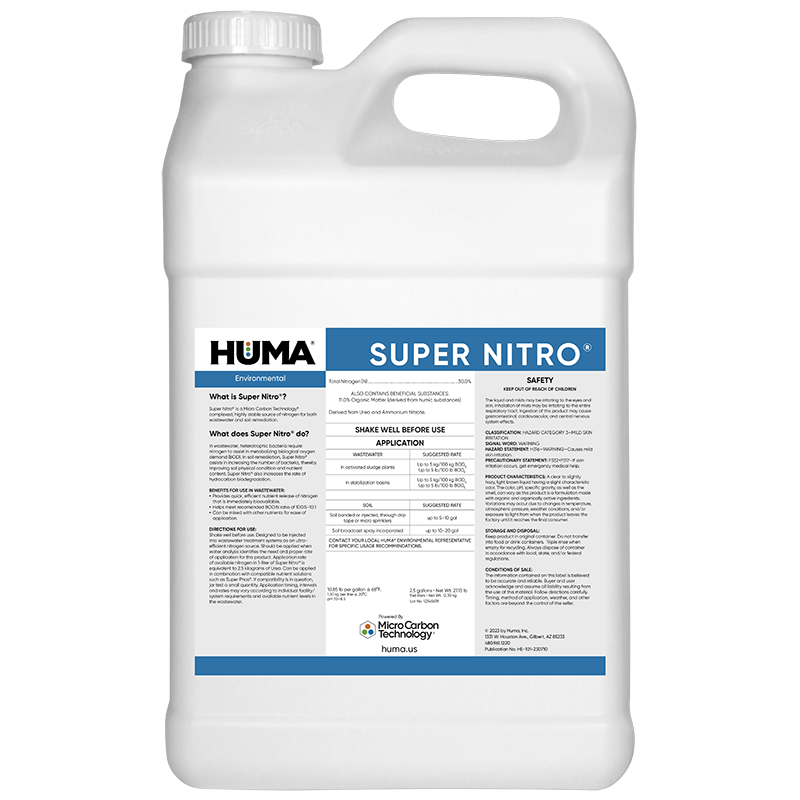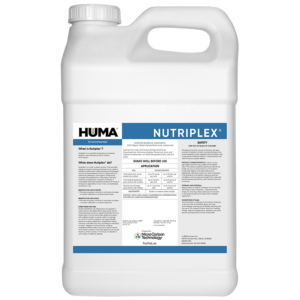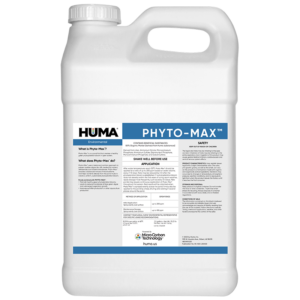Super Nitro® (HE)
Benefits of Use:
- Helps meet recommended BOD:N ratio of 100:5-10:1
- Provides quick, efficient nutrient release of nitrogen that is immediately bioavailable.
- Can be mixed with other nutrients for ease of application.
Benefits of Use In Soil:
- Resists nitrogen leaching and volatilization.
- Moves with irrigation water to aid in proper placement.
- Should be used when soil analysis identifies the need for and proper rate of application for this product.
FAQs
Related Products
Related Case Studies

Bio Energizer® Reduces Sludge 45% In One Year, Saves Municipal Plant $6 M In Dredging Costs
Summary In this study, a one-year bioremediation plan featuring Bio Energizer® was implemented for a municipal wastewater treatment facility with 2 primary lagoons in which sludge depths had reached 5–7 feet. The lagoons were at risk of upset and wastewater processing capacity was reduced. Sludge levels were measured at baseline and quarterly. Sludge depth was

Bio Energizer® Toxicity Testing
Abstract Bio Energizer® is frequently used to facilitate bioremediation of wastewater. A study was conducted by an independent laboratory to measure possible negative effects Bio Energizer® might have on a freshwater test species (rainbow trout). Using EPA-approved methodology to evaluate Bio Energizer®, the lab administered the product at 10 ppm to a test tank and

Super Phos® Lowers Papermill Operating Costs in China
Problem The existing wastewater treatment system uses 600 kg/day of diammonium phosphate (DAP) to provide the needed phosphorus concentration to maintain a healthy microbial population to treat wastewater. These microorganisms break down the organic matter being discharged from the paper processing facility. Without the correct concentration of available phosphorus, the microorganisms are unable to grow
Related Blog Posts

Breaking Down COD
By Heather Jennings, PE When I first came into the water field in the 2000s, the general rule of Chemical Oxygen Demand to Biochemical Oxygen Demand (or COD to BOD5) was 2:1. That was pretty much all you needed to know in order to understand whether something could be treated chemically, physically, or biologically. Now, the wastewater industry has moved toward COD instead of BOD5. The reason that COD is
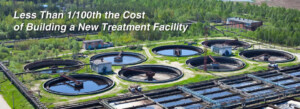
Reduce the Need for New Treatment Plants
Try our Probiotic Solutions® products before considering building a new treatment plant. Probiotic Solutions® products are used successfully in wastewater treatment systems to improve water quality and reduce operating costs.
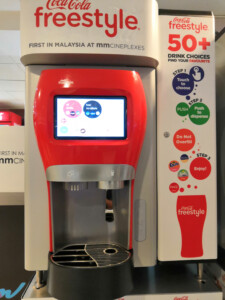
Bargaining for Clean Water: Why Dean Kamen Invented the Coca-Cola Freestyle
By Jael Batty When Kamen asked Coke for help distributing his water purifier, Coke challenged Kamen to develop a better soda fountain first. Dean Kamen, Inventor of Medical Technology The inventor of the Segway, Dean Kamen is known in the scientific community for developing medical equipment. His inventions include a wearable prescription pump for insulin

